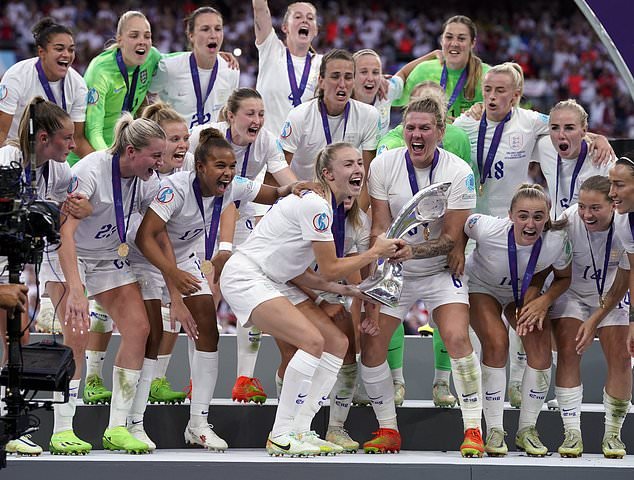Even without accounting for the effect of the Lionesses’ Euro 2021 victory, the number of girls playing football in England has risen by 100,000 since 2017.
Physical activity levels among kids aged five to 16 are tracked in the Active Lives study by grassroots funding organization Sport England for the 2021–22 school year.
With this year’s data collected before Sarina Wiegman’s squad won the European Championship on July 31, it was discovered that girls’ football participation had improved significantly since the first survey in 2017–18.
In comparison to the most recent pre-pandemic survey in 2018–19, the survey indicated that 98,000 more girls were classified as active, which is defined as engaging in 60 minutes or more of physical activity each day.
Additionally, it revealed that since the survey’s inception five years ago, girls in secondary school are now more active than ever.
Overall, 3.4 million youngsters (47.2% of those assessed) were classified as active, indicating that activity levels had returned to those before the pandemic. In comparison to the academic year 2020–21, the poll indicated that 219,000 more kids were now considered to be active.
Inequality was still highlighted by the data, though.
The socioeconomic status of a child continues to be a significant role, with boys being 5% more likely than girls to be active (50 versus 45%).
Children from less affluent homes were shown to have a 10% lower likelihood of being active than those from more affluent families – 42.5% versus 52.5%.
According to the report, with the exception of black children, activity levels for various ethnicity groups have returned to those from before the pandemic. Black boys’ levels of activity are 7.7% lower now than they were in 2018–19.
Boys in Asia are 10% more likely than girls to be active, and this gender disparity in activity levels is still the biggest.
Stuart Andrew, the minister of sports, stated: “It is really encouraging to see a surge of kids and teens returning to enjoy the advantages of physical activity since the pandemic. However, I am aware that more work needs to be done.
Our latest #ActiveLives Children and Young People’s survey is in 📣
Read the full report here 👇 #UnitingTheMovement
— Sport England (@Sport_England) December 8, 2022
The core of what we stand for remains giving kids the best start in life and creating a welcome environment for them to participate in sport wherever they are. We will continue to work with Sport England to ensure every child has access to the right facilities and opportunities both in and out of school, to achieve their 60 minutes of activity a day. “We will continue to work with Sport England to ensure every child has the access to the right facilities and opportunities both in and out of school, to achieve their 60 minutes of activity a day.”
Tim Hollingsworth, chief executive of Sport England, continued, “This overall growth is great, but there is more to do to support children and young people from all circumstances in enjoying the advantages of sport and physical activity.
To bring the general level to the proper level, we still have a ways to go. In order to ensure that their experiences are pleasant, we will fight for the rights of children and young people, especially those who encounter inequality and are less likely to participate in sport and physical exercise.

